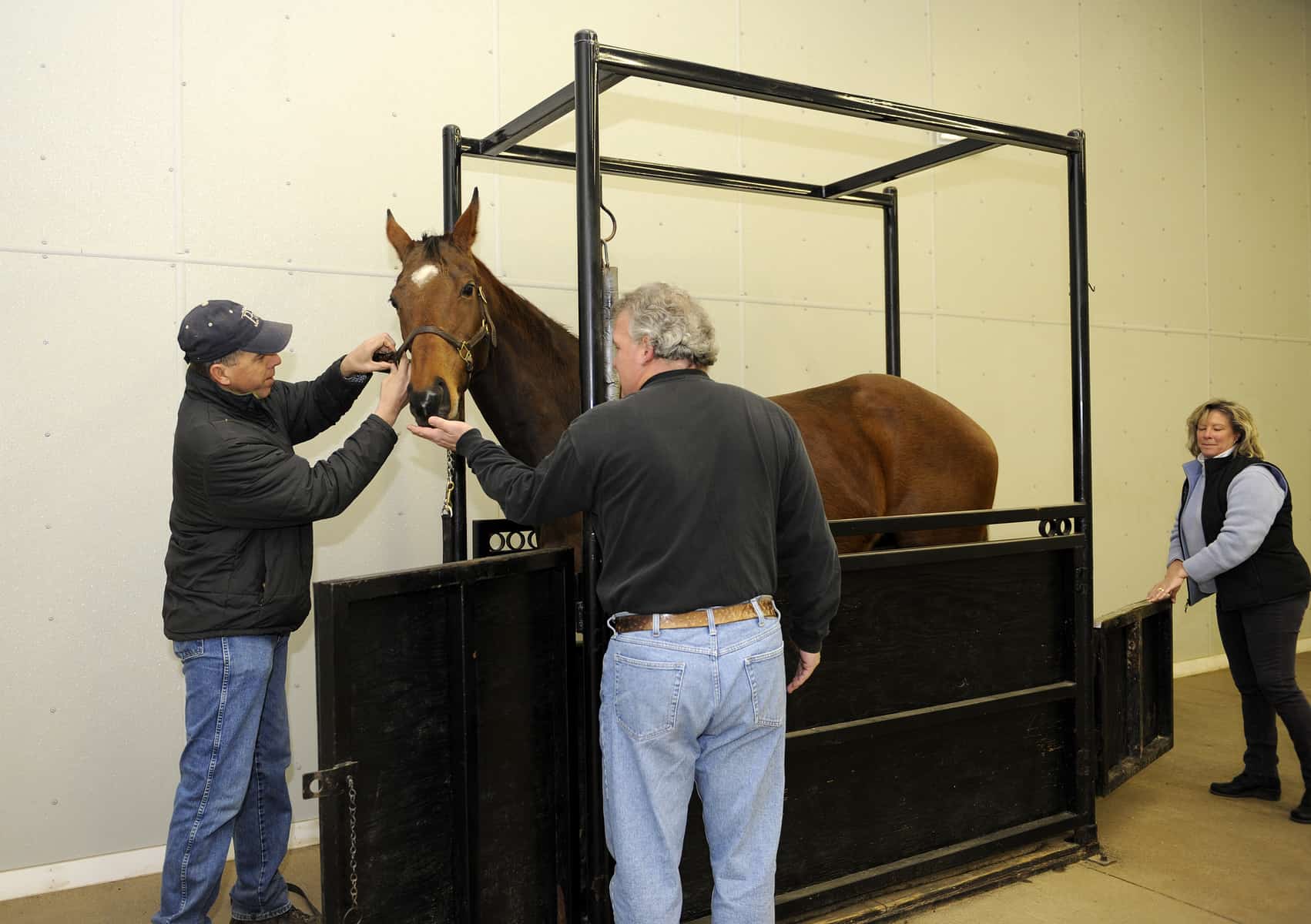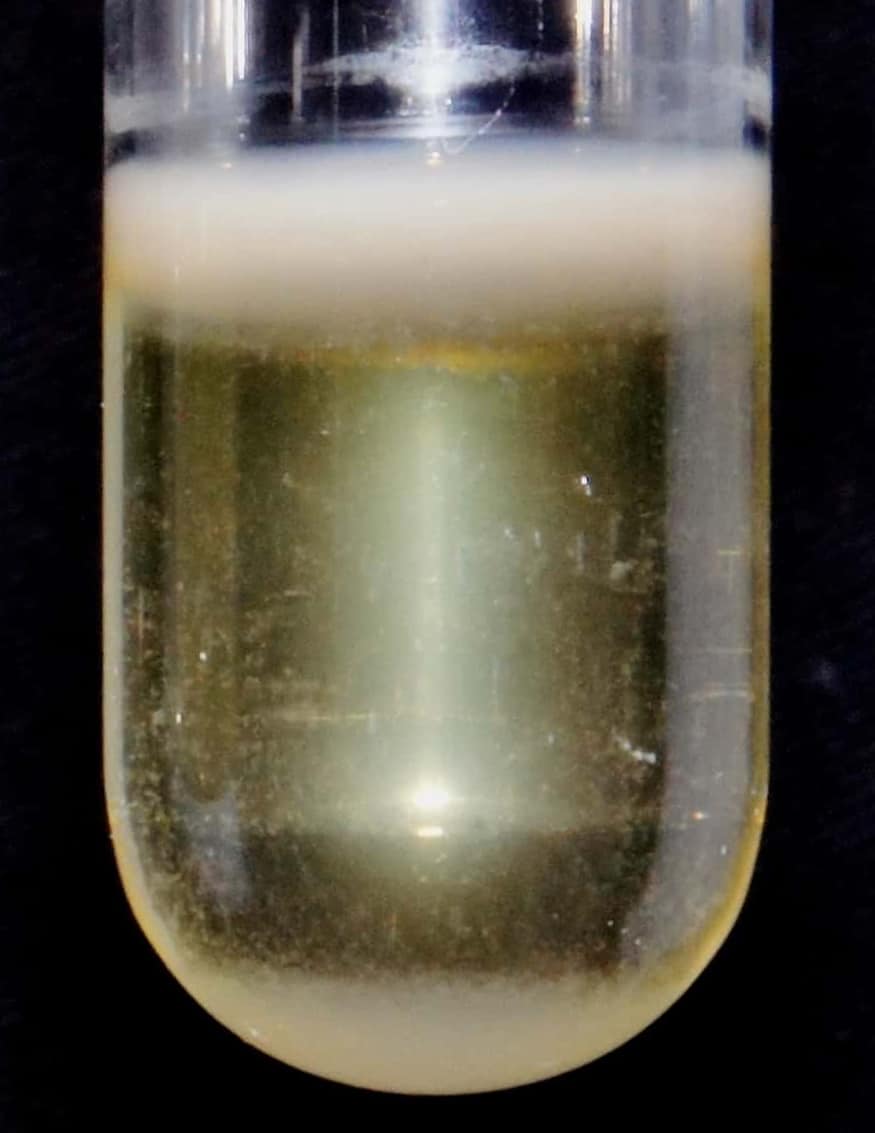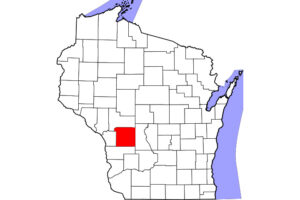What’s Plaguing Your ‘Problem Mare’?

If you’re struggling to get a mare pregnant, here’s how to work with your veterinarian to resolve the most common issues
Most mares get pregnant without major problems, but some encounter difficulties along the way. Breeders have a hard time getting certain mares in foal altogether, while other mares conceive but lose the pregnancy. The list of what can cause these reproductive issues is lengthy; when they occur, breeders and veterinarians must work together to determine the reason and find resolution.
Is She Truly a Problem Mare?
If a mare’s having difficulty conceiving, Karen Wolfsdorf, DVM, Dipl. ACT, field veterinarian and reproductive specialist at Hagyard Equine Medical Institute’s McGee Fertility Center, in Lexington, says the first thing to do is identify whether she’s actually a “problem mare.”
Consider, for instance, an 18-year-old mare that hasn’t had a foal in two years, was bred repeatedly to a fertile stallion, and is still not in foal. Then consider a 14-year-old mare that’s had multiple foals, foaled late in the season, and didn’t take after getting bred back once. Both are considered “barren mares,” says Wolfsdorf, but only the former is likely a true problem mare.
This is one of the reasons Wolfsdorf gets a history on a mare that’s struggling to conceive—to determine why. Has she had a dystocia, or difficult birth? Past postpartum complications?
“Besides her general background, we need to know if she’s been bred before, how old she is, if she’s ever had a foal, and if not, how many times was she bred?” adds Patrick McCue, DVM, PhD, Dipl. ACT, professor in Colorado State University’s Equine Reproduction Laboratory, in Fort Collins. “What type of semen was used—fresh, cooled, or frozen? How many cycles did they try? Pregnancy rates in mares may range from 40 to 60% per cycle, so not getting pregnant on the first or second cycle would not be grounds to think there is a reproductive problem.”
The next step is conducting a basic physical exam to ensure the mare’s healthy. This includes looking at body condition to make sure she’s not too thin or too fat and for signs of metabolic disease or other underlying health issues, Wolfsdorf says.
Then the veterinarian will likely perform a breeding soundness exam to assess perineal and vulval conformation, check the ovaries and uterus via transrectal palpation, and ultrasound the reproductive tract. Palpation and ultrasound will reveal the mare’s estrous cycle stage and indicate the optimal time to collect samples for uterine culture and cytology or even a uterine biopsy to identify infection.
The Top Troublemaker: Endometritis
Two types of endometritis (inflammation or infection of the uterus) are among the most common problems associated with getting mares pregnant: persistent mating-induced endometritis and infectious endometritis.
After being bred, mares naturally develop a mating-induced endometritis. This is a normal, short-lived inflammatory response to sperm deposited in the uterus that helps get rid of the dead sperm, bacteria, and inflammatory debris.
“A normal mare will have an inflammatory response, uterine contractions, and her uterus will clear within 24 hours post-breeding,” says Wolfsdorf. “Some mares, however, are more susceptible to endometritis if they have a saggy uterus and may not have (an) appropriate immune response post-breeding. Those mares are incapable of adequately contracting their uterus. This sets them up for a persistent mating-induced endometritis,” an environment that makes embryo survival difficult to impossible.
“With those mares, sometimes all you need to do is administer oxytocin, which helps contract the uterus, or a uterine lavage and then give oxytocin to help flush it out,” she continues. “If this doesn’t help, the mare may need further treatments. These can include platelet-rich plasma, acupuncture, or other, more intense therapies.”
Infectious endometritis, on the other hand, is usually associated with older mares with saggy uterine or poor perineal conformation due to having many foals.
Bacteria from outside can get into the vagina and go up through the cervix into the uterus. Sometimes these pathogens can hide, with bacteria or fungal organisms such as yeast causing endometritis or inflammation deep within the uterus.
“They may be hidden in mucus or in biofilm (a protective coating over a colony of bacteria) or deep within the endometrial tissue itself,” she says. Diagnostic tests veterinarians can use to locate and ID the pathogens include:
Endometrial biopsy to identify abnormalities such as inflammation, increased density of endometrial glands, scarring around the glands, and degree of scar tissue. Veterinarians grade biopsies on a scale of one to three, with three being most severe. “This grade gives a predictive index—the likelihood of the mare being able to carry a foal to term—but can also provide other information, such as abnormalities within the endometrium,” Wolfsdorf says.
Biopsy culture to identify bacteria living deep in the tissue. “If a mare has a deep-seated infection, we can use a mucolytic that helps break down mucus or a (growth medium) product called bActivate, which activates dormant Streptococcus that can live within the endometrium, stimulating them to become metabolically active so we can treat them,” says Wolfsdorf.
Hysteroscopic exam, in which the veterinarian uses an endoscope to look inside the uterus. “This can help identify fluid, adhesions, old C-section scars that may be a nidus (focus of infection), or foreign bodies,” she explains. “We can also look at the openings of the oviducts into the uterus.”
Battling Biofilm
If your veterinarian isn’t making progress treating a mare’s infection using the appropriate therapies, the bacteria might be producing biofilm. In recent years researchers have been diligently studying these problematic bacterial communities and how to eliminate them.

“Mares with chronic endometritis may have certain strains of bacteria that produce an extracellular polysaccharide matrix, which forms a scaffolding on which the bacteria colony can grow,” says Wolfsdorf, referring to the biofilm’s makeup. “This matrix hides bacteria and makes them more resistant to antibiotics and the mares’ own immune response.”
“Biofilm keeps the mare’s immune system from recognizing the presence of the bacteria,” says McCue. It also decreases their metabolic rate, and antibiotics are less effective if the bacteria are not replicating. Antibiotics also don’t penetrate as well through the biofilm.
“Biofilm has been a hot topic for several years, and there are some medications that can help eliminate biofilm,” he adds. “Mixing a combination of antibiotics and nonantibiotic therapies has been effective to get rid of both the biofilm and the bacteria within the biofilm. Two of the substances utilized to break down biofilm are Tris-EDTA and DMSO, which subsequently allow the antibiotic to penetrate and kill the bacteria living within.”
If your veterinarian identifies a biofilm using a biofilm assay, he or she can determine which antibiotic to prescribe and which products will help break down that specific biofilm.
Other Causes of Infertility
Additional problems you might encounter in certain mares include:
Genetic abnormalities of the embryo “If a mare gets pregnant and loses it by 30 days, sometimes there are chromosomal or allele translocations (essentially, genetic flaws with that embryo) that may cause this to happen,” Wolfsdorf says.
Cervical tears Mares that suffer cervical tears during foaling generally have a history of chronic endometritis, she says. The damaged cervix will not provide a good seal until you repair it, and the mare will continue to develop endometritis.
“Once you repair a cervix, however, it may not be able to relax properly,” Wolfsdorf adds. “This can cause the mare to retain fluid post-breeding. She must also be monitored when she foals, because she may tear it again; it may need to be repaired after each foaling.”
Blocked oviduct Veterinarians typically don’t think about oviducts as causing fertility issues until they’ve ruled everything else out. “Mares with blocked oviducts generally have a specific history,” says Wolfsdorf. “They may be in their mid- to older years, with good reproductive conformation, no evidence of endometritis, and have been bred to fertile stallions but haven’t produced a pregnancy.”
While oviduct blockages can be difficult to diagnose, researchers have recently described several treatment options, including cannulation and lavage of the oviducts and topical application of prostaglandin E1 or E2 to dilate them and relieve the blockage, says McCue. Administration of the prostaglandin E1 misoprostol in one study, for instance, “showed a remarkable resumption of fertility in mares with a history of unexplained infertility,” he says.
Uterine cysts “Endometrial cysts occur mainly in middle-aged to older mares and are unusual in young mares,” says McCue. Uterine cysts visible on ultrasound usually indicate scar tissue or fibrosis within the uterine lining. If a mare has just a few small cysts, they generally don’t interfere with her ability to get or stay pregnant, but if cysts are large or numerous, they could be problematic. This is because when the embryo comes down through the oviduct and enters the uterus, it must be able to move around before it fixes in the base of a horn (the mare has two uterine horns extending from the uterine body). This movement of the embryo is important in signaling to the mare she is pregnant.
“If a cyst blocks the embryo’s ability to move, the mare will not recognize she is pregnant and will return to heat,” says Wolfsdorf. “If the embryo attaches next to a large cyst or numerous cysts, it cannot get the appropriate amount of nutrients (from the uterine wall).”
Veterinarians can remove small cysts with a laser during hysteroscopic exams. They use snares or other devices to manually remove larger cysts.
Take-Home Message
Resolving a breeding problem involves knowing the mare’s reproductive history, performing a thorough reproductive examination, and pursuing further diagnostic procedures (such as biopsies, cultures, etc.) if needed. Based on a good diagnosis, our sources say most problems can be resolved with appropriate treatment.
Written by:
Heather Smith Thomas
Related Articles
Stay on top of the most recent Horse Health news with



















